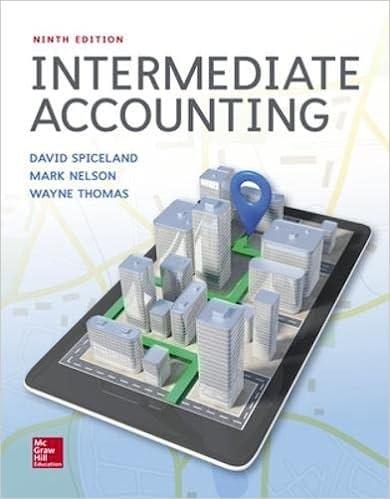The following is an excerpt from Antar, Sam, Is Green Mountain Coffee Roasters Shuffling the Beans to
Question:
The following is an excerpt from Antar, Sam, "Is Green Mountain Coffee Roasters Shuffling the Beans to Beat Earnings Expectations?" Phil's Stock World delivered by Newsier, May 9, 2011.
On May 3, 2011, Green Mountain Coffee Roasters (NASDAQ: GMCR) beat analysts' earnings estimates by $0.10 per share for the thirteen-week period ended March 26, 2011, The next day, the stock price had risen to $11.91 per share to close at $75.98 per share, a staggering 18.5% increase over the previous day's closing stock price. CNBC Senior Stocks Commentator Herb Greenberg raised questions about the quality of Green Mountain Coffees earnings because its provision for sales returns dropped $22 million in the thirteen-week period. He wanted to know if there was a certain adjustment to reserves ("a reversal") that helped Green Mountain Coffee beat analysts' earnings estimates....
During the thirteen-week period ended March 26, 2011, it was calculated that Green Mountain Coffee had a negative $22.259 million provision for sales returns. In its latest 10-Q report, Green Mountain Coffee disclosed that its provision for sales returns was $5.262 million for the twenty-six week period ending March 26, 2011,but the company did not disclose amounts for the thirteen-week period ended March 26, 2011. 1n its previous 10-Q report for the thirteen-week period ended December 25, 2010, Green Mountain Coffee disclosed that its provision for sales returns was $27.521 million. Therefore, the provision for sales returns for the thirteen-week period ended March 26, 2011 was a negative $22.259 million ($5.262 million minus $27.521 million).
Required:
1. Access EDGAR on the Internet. The web address is www.sec.gov.
2. Search for Green Mountain Coffee Roasters, Inc.'s 10-K for the fiscal year ended September 25, 2010 (filed December 9, 2010). Answer the following questions related to the company's 2010 accounting for sales returns:
a. What type of an amount (for example, asset, contra-liability) is Sales Returns Reserve? Explain.
b. Prepare a T-account for fiscal 2010's sales returns reserve. Include entries for the beginning and ending balance, acquisitions, amounts charged to cost and expense, and deductions.
c. Prepare journal entries for amounts charged to cost and expense and for deductions. Provide a brief explanation of what each of those journal entries represents.
d. For any of the amounts included in your journal entries that appear in Green Mountain's statement of cash flows on page F-8, explain why the amount appears as an increase or decrease to cash flows.
3. Now consider the information provided by Antar in the excerpt at the beginning of this case.
a. Prepare a T-account for the first quarter of fiscal 2011's sales returns reserve. Assume amounts associated with acquisitions and deductions are zero, such that the only entry affecting the account during the first quarter of fiscal 2011 is to record amounts charged or recovered from cost and expense. Compute the ending balance of the account.
b. Prepare a T-account for the second quarter of fiscal 2011's sales returns reserve. Assume amounts associated with acquisitions and deductions are zero, such that the only entry affecting the account during the first quarter of fiscal 2011 is to record amounts charged or recovered from cost and expense. Compute the ending balance of the account.
c. Assume that actual returns were zero during the second quarter of fiscal 2011. Prepare a journal entry to record amounts charged or recovered from cost and expense during the second quarter of fiscal 2011. How would that journal entry affect 2011 net income?
d. Speculate as to what might haw caused the activity in Green Mountain's sales returns account during the second quarter of fiscal 2011. Consider how this result could occur unintentionally, or why it might occur intentionally as a way to manage earnings.
StocksStocks or shares are generally equity instruments that provide the largest source of raising funds in any public or private listed company's. The instruments are issued on a stock exchange from where a large number of general public who are willing...
Step by Step Answer:

Intermediate Accounting
ISBN: 9781259722660
9th Edition
Authors: J. David Spiceland, James Sepe, Mark Nelson, Wayne Thomas





